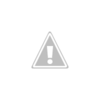The straight dope on headspacing a No1 MkIII -
To fit new bolt-head to Rifles No. l.—(Spare part bolt- heads, marked “S” on the top, are longer at the front.) Assemble the bolt-head to the bolt, insert it in the body, and test with .064-inch No. 1 gauge; should the bolt not close over the gauge, remove the bolt-head from the bolt, and having placed a piece of emery cloth (No. F) on a flat surface, rub the face of the bolt-head on the emery cloth, maintaining a circular motion in order to preserve a flat surface, until sufficient metal has been removed to enable the assembled bolt to close over the gauge. The bolt should not close over the .074-inch No. 1 gauge. Care should be taken to keep the-face of the bolt-head flat and square. After fitting and adjusting, the top front edge of the face of the bolt-head is to be rounded to a radius not exceeding .02-inch.
Note.—When it is found that the bolts of several rifles turn over the 074-inch No. 1 gauge, the bolt-heads should be ex- changed among such rifles, as, owing to the varying lengths of bodies and bolts, bolt-heads which are too short in one rifle may be serviceable in another. Bolt-heads that have been replaced in rifles by longer ones, should be kept by the armourer and used whenever possible in rifles requiring the bolt-head replaced, so as to avoid unnecessary use of new spare part bolt-heads. Part-worn bolt-heads held as required by armourers in accordance with the foregoing need not be accounted for as part of the annual allowance of new spare parts.
8. Instructions for fitting new No. 2 bolt-heads and firing-pins to rifles No. 2, Mk. IV*.—(a) Assemble the bolt-head to the rifle without the firing-pin, and adjust the front face, where necessary, to enable the bolt to be closed with the bolt-head touching the face of the barrel.
(b) Remove the bolt-head from the rifle, insert the firing-pin, and press home to the small shoulder (A) (Fig. 2). If the rear end (B) of the pin is found to project beyond the rear face (C) of the bolt-head, reduce the pin at (B) until it is just below the face (C). This ensures that the bolt-head, and not the small shoulder (D) of the firing-pin, acts as a stop to the forward movement of the striker.
(c) Assemble the bolt complete; place the cocking-piece in the long cam of the bolt; test the protrusion of the point of the firing-pin, which should be the same as in the Service rifle (i.e.,.04 inch to .042inch),and adjust the point where necessary, maintaining the radial form at the point, as illustrated.
Note.—The internal shoulder (A) in the bolt-head controls the firing-pin in its most forward position, and when the firing- pin is properly adjusted1 prevents it from striking the edge of the chamber when snapping. Therefore, when adjusting the rear-end (B) of the firing-pin, care should be taken to see that the pin is not more than .003 inch below the rear face (C) of the bolt-head, as whatever distance it is below, so there will exist a similar clearance between the shoulder (D) of the pin and the shoulder (A) of the bolt-head when the pin is gauged for protrusion, and this, added to the amount of protrusion as gauged, gives the amount of protrusion of the striker point in its most forward position.
So not a simple as I thought I remembered - apologies!
Charles
 ).
).
